We received updates from the American Arts Incubator participants in Thailand! Here's what they've been up to since the exchange wrapped up in July (submissions have been edited for length and clarity).
Make It Clear
We believe that water resources and the community nearby are deeply connected and affected by one another. Therefore we are designing an activity project with the khlong Ladprao community called the "Ice Breaking Board Game." It is a new media board game which interacts with body movements and sounds. This is ideal for building better understanding about water resources within the community and making a better relationship among them. We tried our best to apply our artistic knowledge to bring concrete benefits to society.
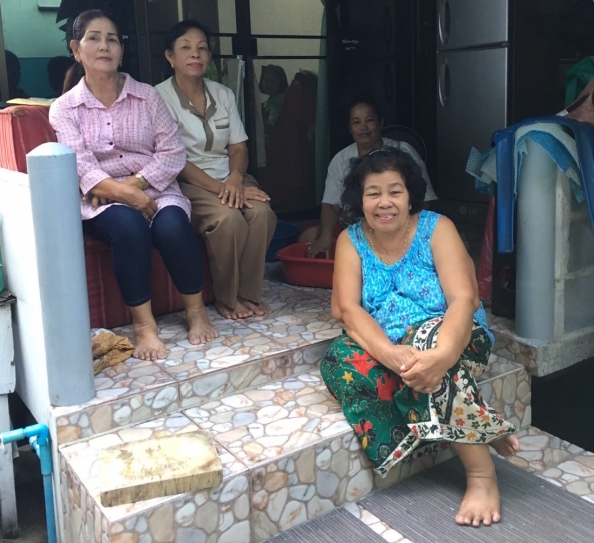
Expected results for the community:
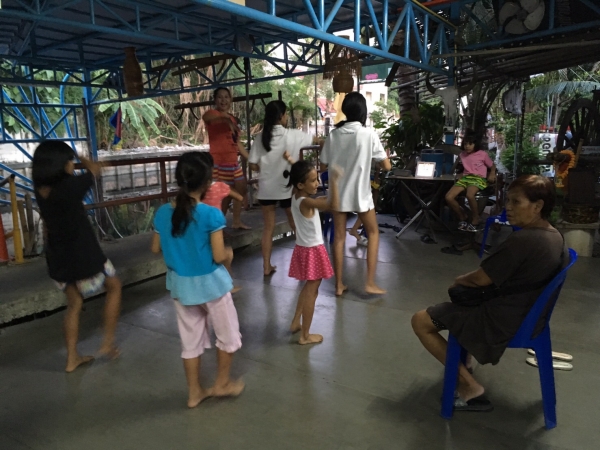
River Voices
Our group met a new possible collaborator, Valerie, at the Bangkok Art and Culture Center in July. She was a museum art director in the USA and had recently joined the Peace Corps. Her project goal is to send Americans to help other countries.
She is currently helping a school in Thailand as an English teacher. Her school is called the Wat Thammajariya school, which currently has 290 students. Her goal is to do art in her school for her students. Since we are looking for a place to make community art about the river, we think it would be perfect for us to visit her school.
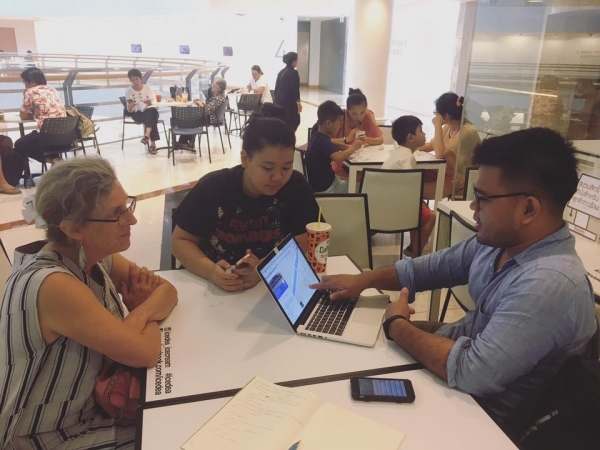
We went to her school and had a meeting with the principal and teachers. They came up with the idea of having secondary school students M.1 - M.3 (12- to 15-year-olds) do the activity, which they can then later organize for younger students in the school. We would have three camps with 30 students at a time, and students would rotate around.
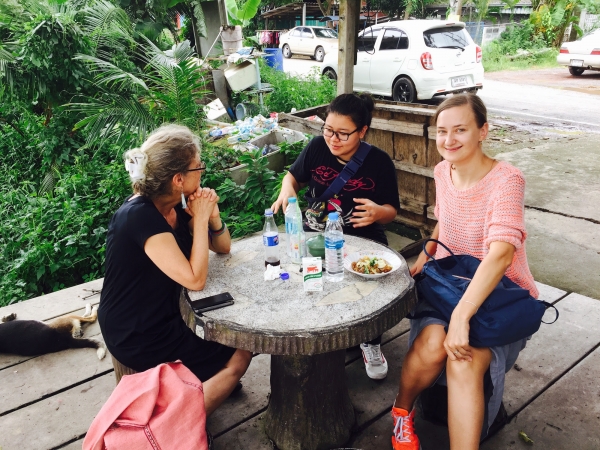
These are the camp ideas:
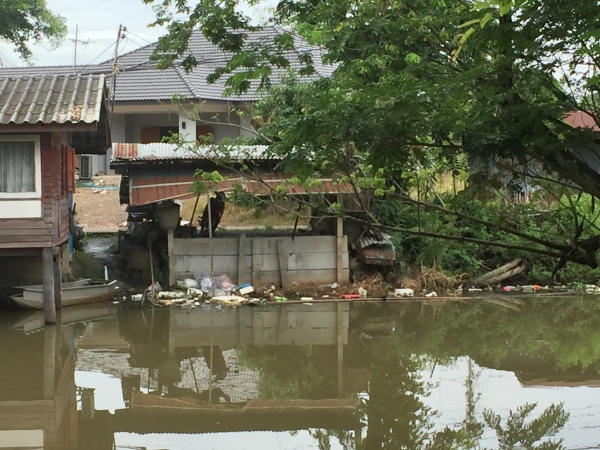
We also visited the canal, and it's quite clean compared to Ladprao community's. There is some trash floating but only in one area. Their community has a trash bank program where people in the community sort the waste and sell them, but it just has started.
The Cleansing of a Canal
We did a workshop with the community in August. Many youngsters and a few adults joined us. The workshop was developed to uncover participants' ideas of what kind of community art project they would like to make. Our aim is that this project would be beneficial to the community in their eyes, not from an outsider's perspective. In the workshop, we guided the participants to dig deep into the urgent needs of their community and revealed what their skillsets are, what skills they want to obtain, and what they're interested in.
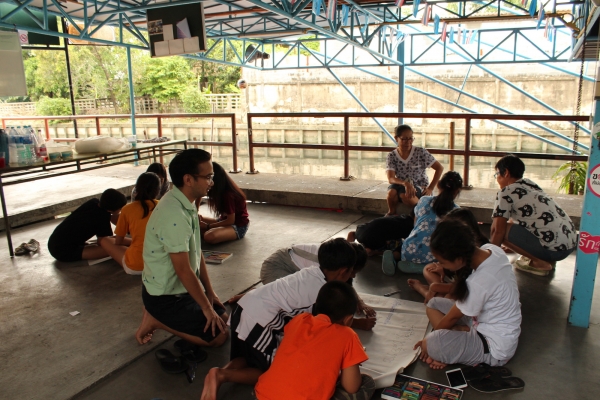
We found out that they would like to have more source of income, tutors for children, and ease the general sadness from the fact that some of the community members will not be able to live there in the future. They are interested in technology and social media. They enjoy drawing, gardening, and many types of sports.
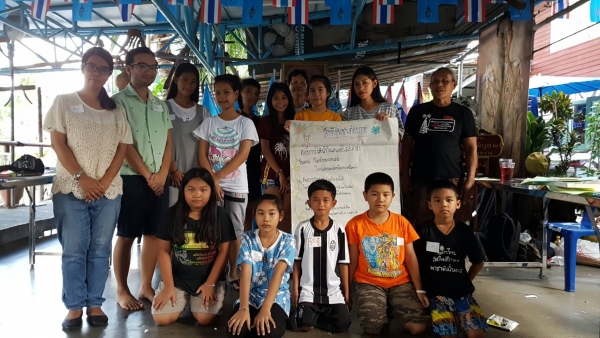
In our next workshop in September, we will guide them to combine these elements into an art project that truly reflects their own community.
It’s hard to for me to believe that it’s been a month since the exchange has ended. The time was intense, rewarding, and the effects of the experience difficult to describe — but I’ll do my best.
I’ve never done anything quite like this: worked for a month in a foreign country where I’ve taught a workshop, facilitated projects, and worked on my own new project. It was a lot in a short, 28-day period.
Bangkok is intense and wonderful at the same time. It is the most urban of urban places that I’ve ever lived in, with very little green space. Cars, motorbikes, people, street vendors, and shopping malls were everywhere. Yet despite the craziness, I felt a warm hug of the humidity everywhere I went. Thai culture is relaxed compared to what you’d find in the United States, so bumping into and around people doesn’t create anxiety and tension as you’d find in other places. I was happy there.
The next step is for me to talk about the experience publicly. Just a few days ago, I presented my Sonaqua project at Dorkbot SF and spoke about the American Arts Incubator Program.

We also have the three projects that were given sustainability grants. One of the projects, River Voices, will go on to have a series of community engagement workshops. In this case, the word “community” means a slightly different thing in Bangkok, where “communities” are more cohesive political entities and are usually situated in low-income areas, often isolated from the rest of the metropolis.
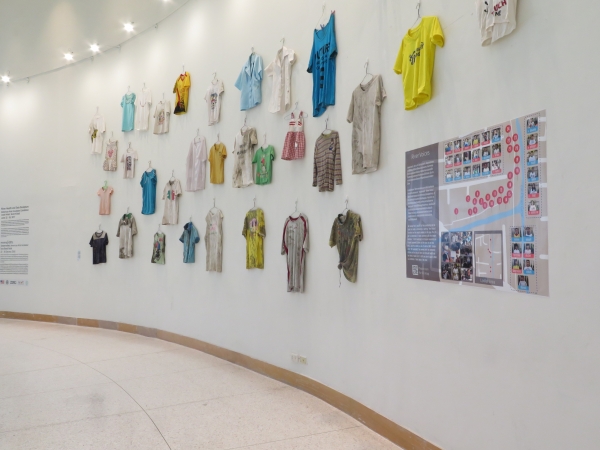
Finally, I will further develop my Sonaqua project, where I sonify water quality. This project will travel to Santa Fe in September. Bangkok was the first step for my work.
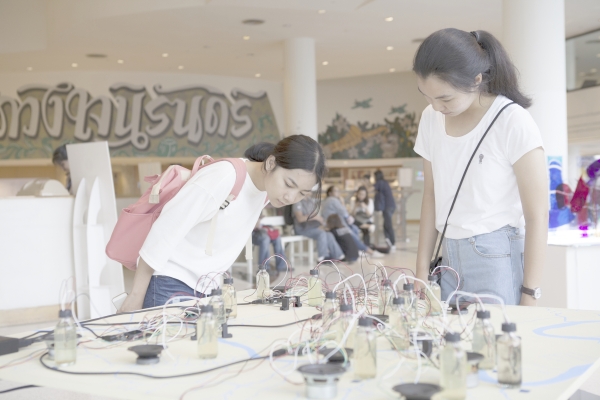
I do hope to come back in the future to do work in Thailand. It holds a special place in my heart. I hardly did anything touristy and instead spent time almost exclusively with Thai folks. I absorbed a much deeper cultural understanding than just about any tourist will get. My fantastic production assistant, Ekarat, was my guide throughout. He would frequently joke about things being done “Thai style,” which could be interpreted a number of ways. Often it meant that matters looked disorganized but always came together magically at the end.
After a short vacation outside of Thailand, I came back to gather my belongings and fly back home. I ended up having a farewell dinner with a few of the workshop participants as well as Ekarat. Here we are eating food on the banks of the Chao Phraya river and drinking Thai beer in the midst of a hard rainstorm that alleviated the humidity for just a few hours. I will miss the friends I made during this special time.
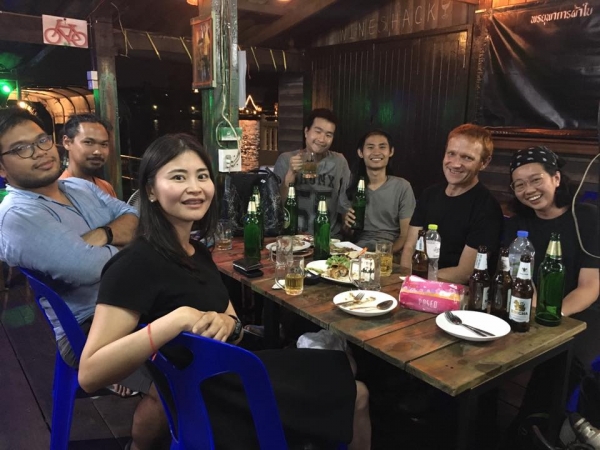
We had our exhibition last week at the Bangkok Art & Culture Center (BACC) and it was a huge success.
I made just two rules for the artworks:
Every exhibition is full of surprises and this one was no exception. Several days before the exhibition, we found out that we had about four times as much floor space and walls available than we had expected. Whoa.
Fortunately, three out of the four groups had works they were planning that would take advantage of the curved walls of BACC. I have no idea what we would have done otherwise.
The exhibition site at BACC was not part of their formal exhibition space. We would set up on the fifth floor, which displays work but is also a public thoroughfare, so our challenge was viewer engagement.
The dirty t-shirts were the most striking thing you saw from a distance. What were these? Hopefully people would get drawn in by their curiosity.
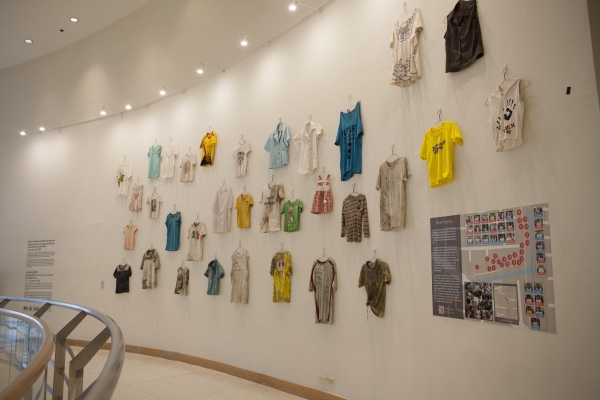
A good exhibition means that people have different levels of engagement.
Some spent a good amount of time with The River Voices — the hanging shirts (above), which were part of a t-shirt exchange with the Ladprao community.
Others were very much interested in the abstract group sculpture on pH, electrical conductivity, and dissolved oxygen: Reflection.
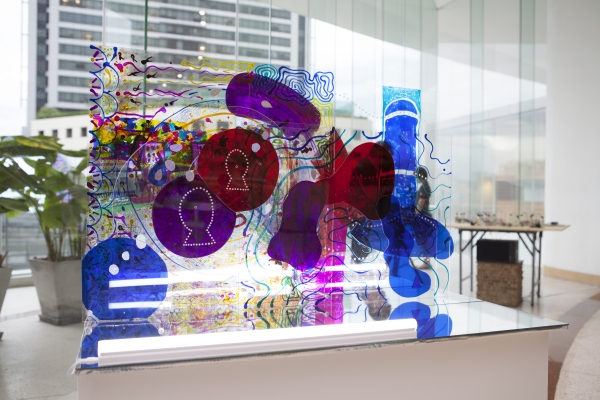
The Cleansing of a Canal
was a storytelling piece that grabbed exhibition-goers who were intrigued by media and direct interpretation of the river/khlong experience.
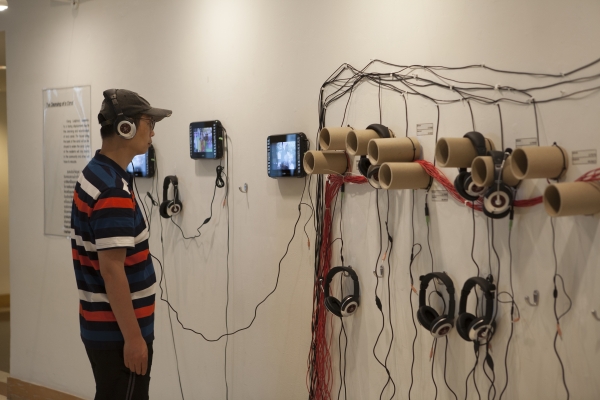
And Make it Clear was an interactive painting that used thermo-reactive paint and mapping of pipe data. This piece was a solid, fun interpretation of the term “interactive.”
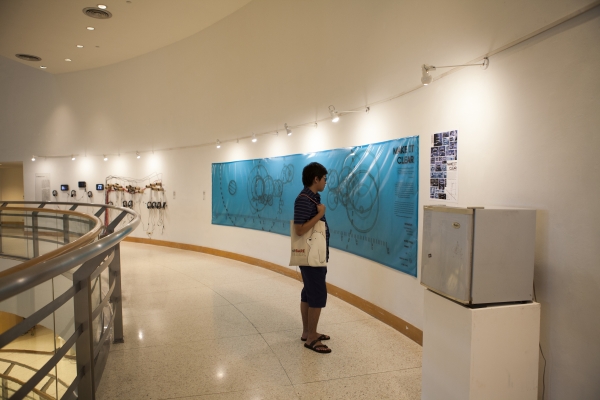
Part of the Incubator included making my own work, Sonaqua — a sonification of water quality. This too felt overwhelming, but fortunately the four teams were doing quite well on their own during their production period, so it let me investigate my own work.
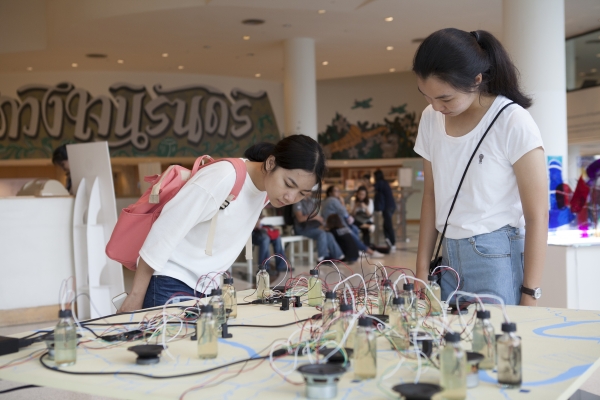
We also got full engagement from the Ladprao community, which is one of the communities that the embassy put us in touch with. They are actively cleaning up the khlong in their neighborhood, and in the process, relocating many of their community members.
We also got lots of media coverage, which is always an important component. We were spotlighted on both Thai PBS and The Matter.
In the end, I can say one thing for certain. The workshop participants were amazing. We had four teams of five people each and they all cranked out work — some until the last minute, maybe a bit too close for comfort — but I think this is the often the way.
Our four teams have been working diligently on their community projects. I asked each one to submit a progress report and got different types of responses. Here they are in raw form with just a bit of editing on my part. Each one is headlined by a nickname for their team, followed by the project name. You can reference my most recent blog post, Community Projects Underway, for short descriptions of each project.
Team Hydra — The Cleansing of a Canal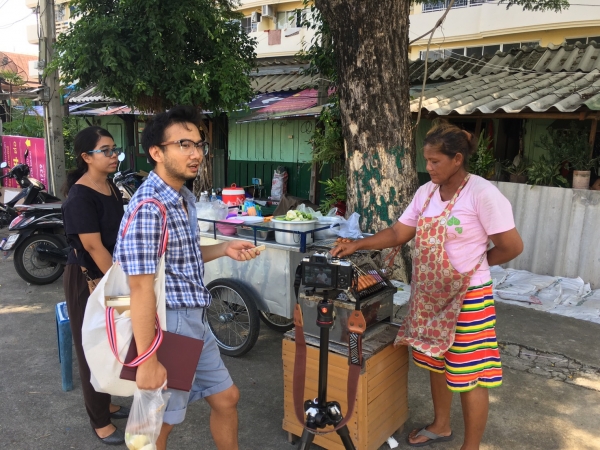
When we first arrived at Ruamjaipiboon 2 community along Ladprao canal, we were instantly hit by the smell of its polluted water. How could someone live like this? It’s right on dark water with all sorts of garbage? Does this affect their health at all? It certainly gave us a headache after spending a few hours there. We couldn't stand the smell.
We met up with members from the community — Auntie Tuk, who talked cheerfully of her granddaughters and her terrible health. She took us to see Auntie Noo who runs a small food stall, feeding the community with her delicious meals. They talked candidly about the housing situation. Where do we go? What can we do? We chatted about life, we ate, we laughed. What is it with this place? It might not be the ideal place to live, but it certainly felt like home.
Team Hma Ngoy — Reflection
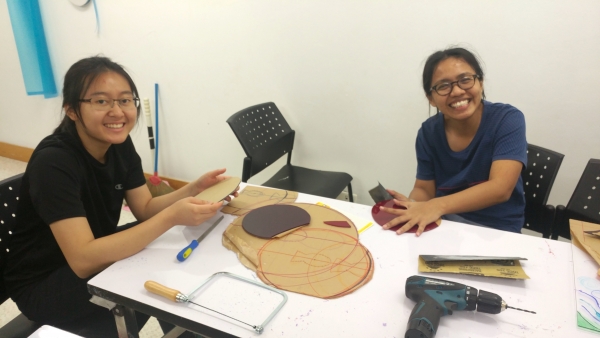
Today we went to a stationery store nearby and bought some materials and tools such as cutters, glass paint, and couple of acrylic sheets which we decided to use instead of stained glass. We also began to design how we are going to transform our hard data into each acrylic sheet. Last but not least, some of us volunteered to clean up the box which will be the standing base for our final work.
Team Sansab — River Voices
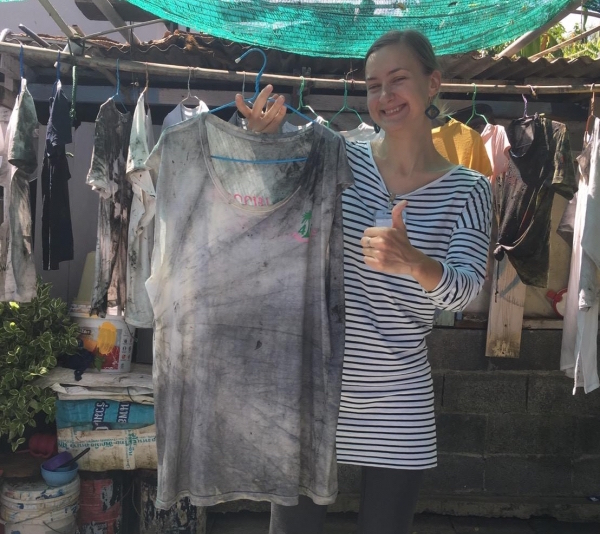
Our project's name is "River Voices" and our main idea is to work with the Ladprao community and to create collaborative art. So in this sense we are very dependent on the community people. On Thursday, we had the first site visit and it was a very strong impression! The community is living in very poor conditions and people living there are vulnerable with lack of education and suitable jobs. But they are a very curious and hospitable people. There are community leaders who are doing a lot of good and right things for these people and trying to create links between this community and the outside world.
So here we were! Our activity consisted of two workshops. The morning "t-shirts workshop" idea was to collect around 30 t-shirts from the community people of different ages and to dip these items in the canal water on different levels. Then we collected all the data needed (t-shirt owner’s information and their house coordinates). In the second, after-lunch “children's collaborative art" workshop we discussed the present canal condition and asked children to draw their ideal canal/water life. We will extract the healthy water "ingredients" from the children's drawings and create a logo which we are going to print on the new t-shirts and gift to all the community people who were participating in the workshops.
The great, hot, very intense and amazing experience of Saturday workshops has taught us so many new things — to be flexible working with the community people, to be ready that what you have planned would not necessarily work exactly that way (which is fine as well), to always keep in mind that this is not only you who is sharing something with the community, but this community is sharing a lot with you too! Amazing!
Team Tum Raud — Make it Clear
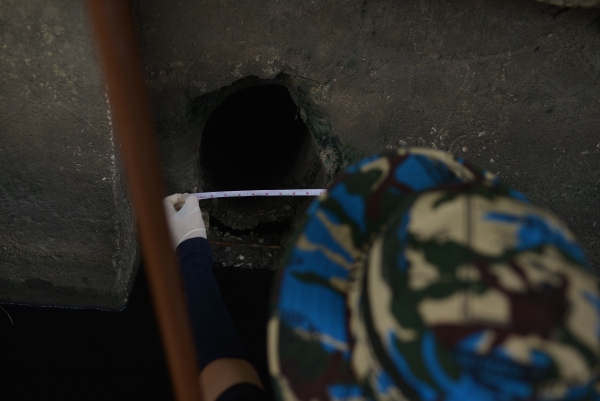
We were planning to collect data from Ladprao community 45's canal. Then we found more than 50 sewage pipes, which we measured and mapped. These are waste disposal drainage for stormwater before going out to the Chao Phraya. After this, we will transfer our data target into artwork.
How do you figure out who will be in the four (and only four) groups to develop collaborative artworks — what we call community projects? With 20 workshop participants, I was hoping to get five in each group, and this was a challenge for me to tackle.
On a sheet of A4 paper, I asked everyone to write down at least three types of water data they were interested in on the left side, their skills on the right side, and of course, their name.
I put them all on a wall and we did a mix-and-match of physical data-visualizing for each group. This was highly effective as within 30 minutes we had our four community projects defined.
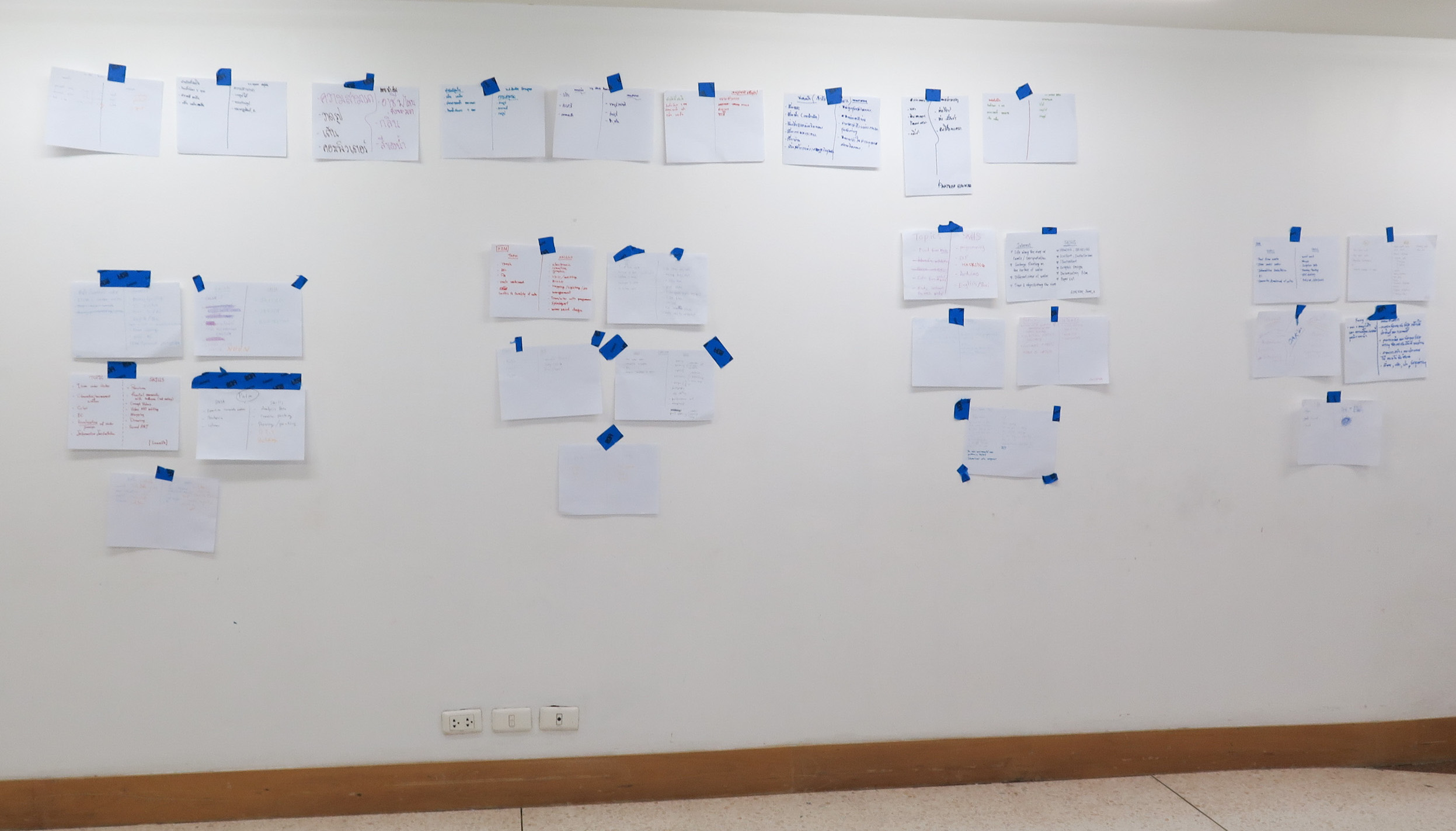
And here they are —
Reflection
They will use stained glass as sculptural material to present hard data measurements of pH, electrical conductivity, and dissolved oxygen along five khlongs (canals) as a group sample. Their piece can be seen from any angle and it will reflect colors up to the ceiling.
The River Voices
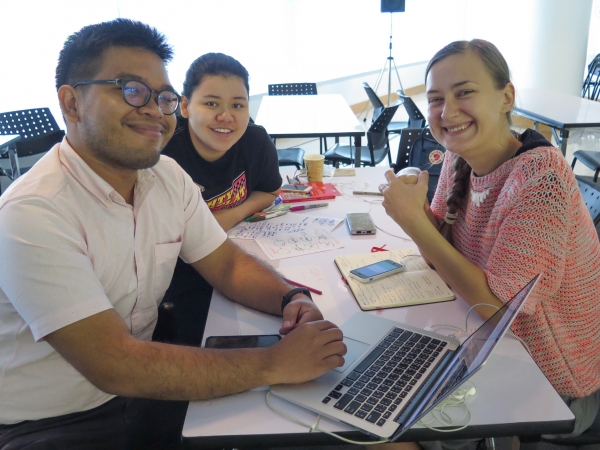
This project looks at the t-shirt as an artistic medium. They will be collecting data from the Ladprao community and convert it into data patterns on t-shirts which the community can wear. They're also looking at creating an environmental alphabet.
Make It Clear
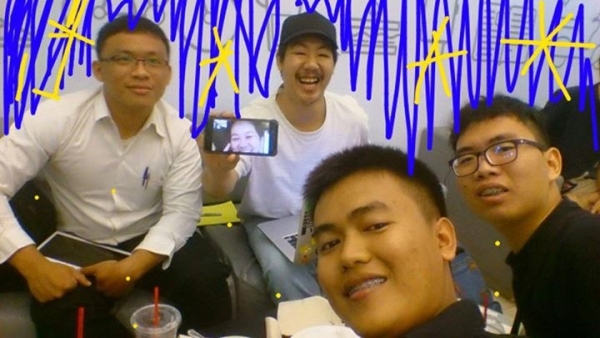
This team is also working with the Ladprao community, but in a less direct way. They will be working on a mapping project of the sewer system where runoff drains after heavy storms. The medium they will be researching is thermochromic and photochromic ink on physical panels.
Silent Opinions
This is a documentary-style data story project, also with the Ladprao community, which is experiencing issues with displacement due to reconstruction of the local canal. The houses along the bank of the canal will be destroyed, which means some of the residents will have to move out of their community. This project will include video and sound documentation along with a physical installation to create a storytelling experience.
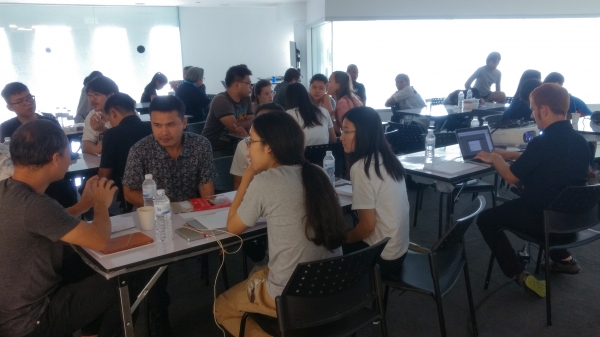
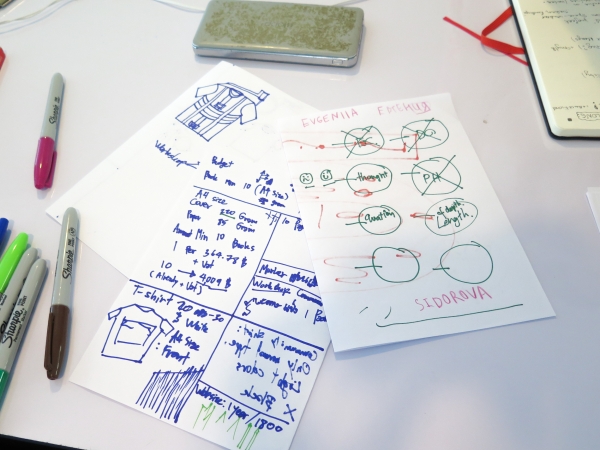
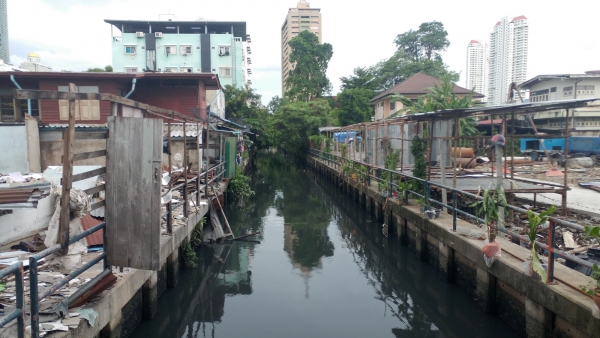
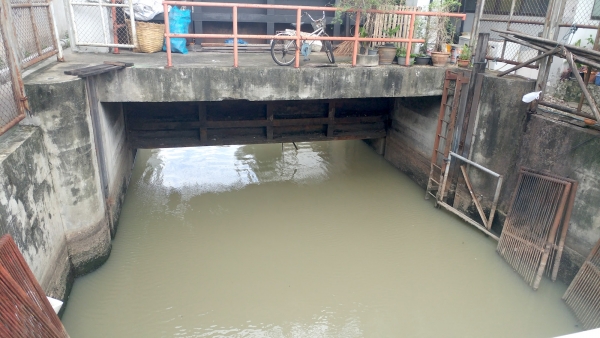
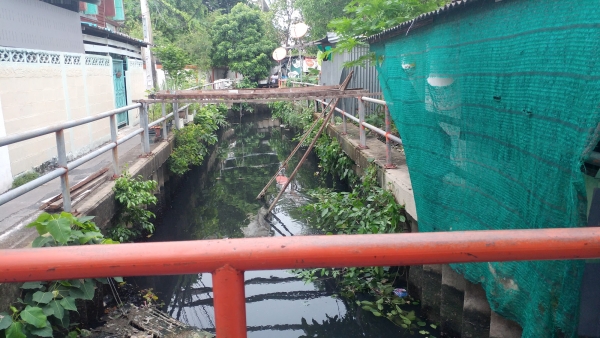
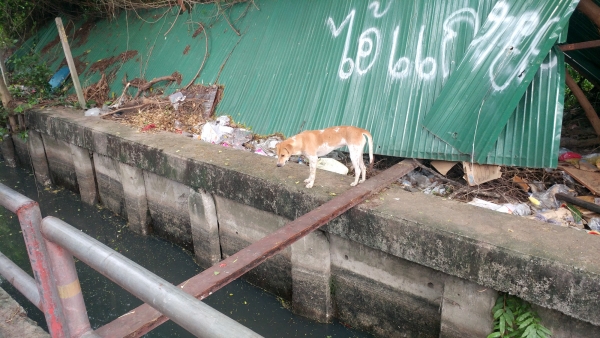
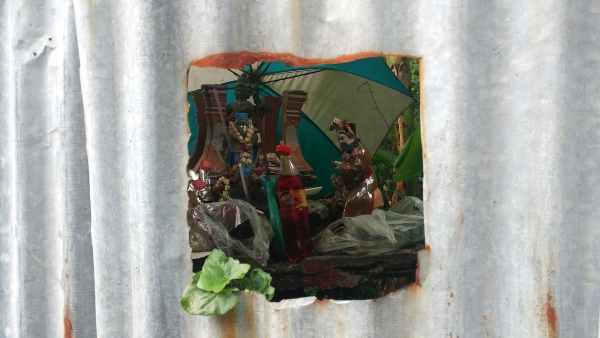
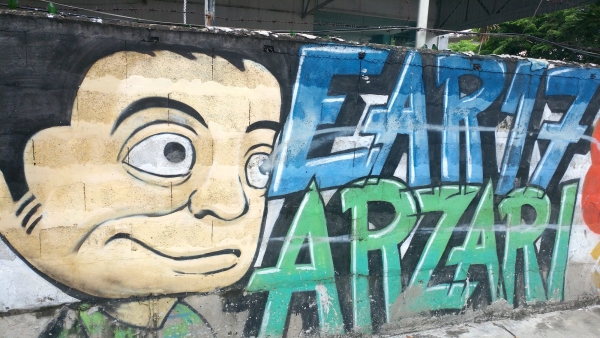
I arrived in Bangkok a couple days ago. Here, you cannot escape the physical effects of the place. It is humid and muggy outside, and once you're inside, your sweat dries from the blasts of AC and you become very cold.
This is the dialogue I quickly experienced: man-made versus nature. Traffic is omnipresent and there are air-conditioned shopping malls everywhere. However, nature still looms large with adverse weather, flooding, and of course, the Chao Phraya river.
On my first day, as I wandered, I also wondered. How many people actually have a relationship with the river that runs through Bangkok? How often do they think about the lifeblood of this city, which provides drinking water, transportation, and in the past, food?
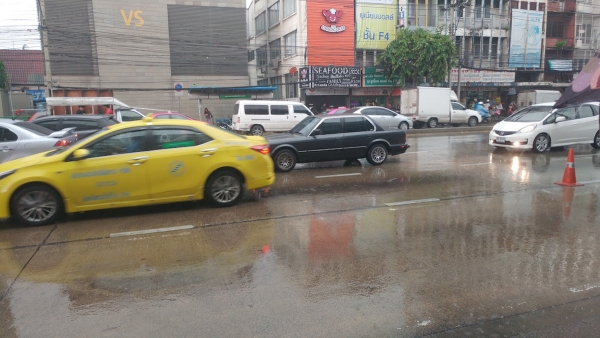 Raining in Bangkok, May 30. Photo: Scott Kildall
Raining in Bangkok, May 30. Photo: Scott KildallThe next morning, I visited the Huay Kwang community. This group of people has lived on the banks of the Chao Phraya for many decades and are low-income, often forgotten by the business and shopping districts. When it rains, the sewer infrastructure backs up and floods the river. Like many cities, the pavement and cement prevents water from flowing naturally into the ground.
The community is currently developing a master plan to relocate their residences to higher shores. It isn’t easy. After all, no one wants to lose their home. Their plan also details widening the canal, dredging it, and establishing a transportation lane for tourism and commerce.
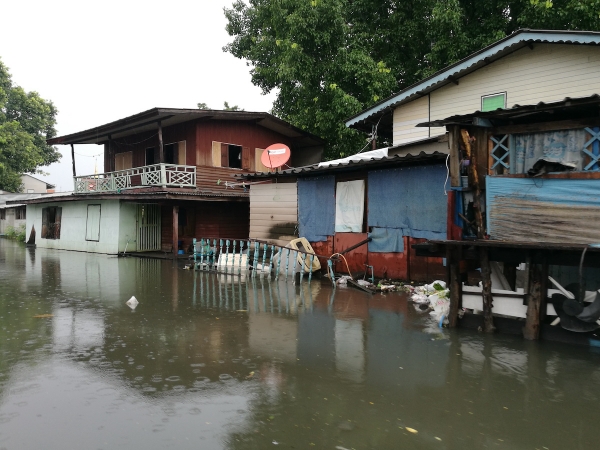
I listened to community leaders and their hopes for the workshop. I made several points, but one of the most important ones was to set expectations for what I can really do here. Since I’m only here for a month, we decided to focus on how to create sustainable projects and make public art with water data.
I also met my assistant, Ekarat, who is super helpful and will be assisting me throughout this experience. I can’t imagine how I would make this project a success without him.
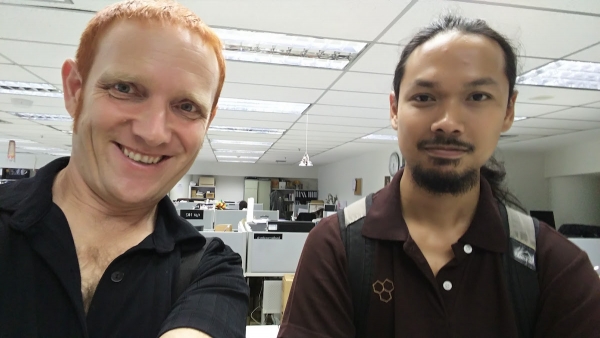
Yesterday, we spent an entire day procuring items. The best find was these small containers. They are often used for hot sauces, but we will use them for water samples on the Chao Phraya. They were a bargain at 10 baht (30 cents USD) each!
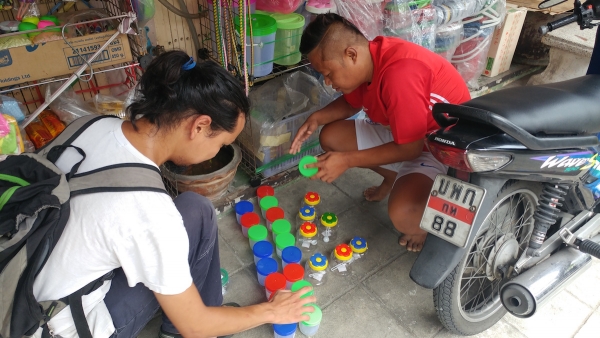
With just 15 days left to go, I’m both nervous and excited about the upcoming American Arts Incubator experience in Thailand. Life is getting busy here.
After some back-and-forth brainstorming with Bangkok Art and Culture Center American Arts, we came up with the name for this workshop intensive: “American Arts Incubator on River Health: Using data sculpture to explore social and environmental issues in Bangkok.”
We will be focusing on collecting physical water samples and using water sensors to data-map the Chao Phraya River, within a dialogue around DIY science. I’m looking forward to facilitating conversation about how artists, activists and others can use citizen science to help inform themselves, tell stories, and perhaps, activate some physical change. The community projects will all involve building some sort of physical installation or sculpture around river water quality.
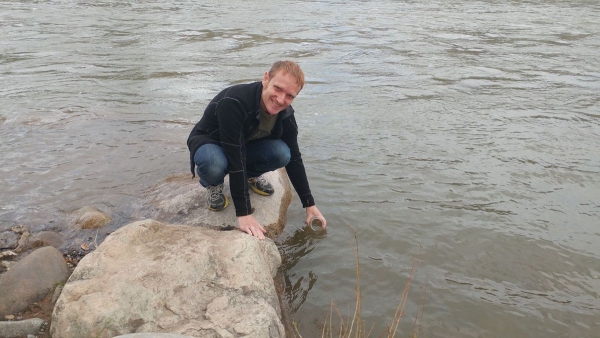
I’ve been furiously ordering supplies, testing electronics and filling in spreadsheets. My aim is to plan as much as possible for the fundamentals, but still be open to improvisation. I’m sure things will shift once I’m in Bangkok and meet the workshop participants.
I’m most excited about what I cannot anticipate. What will the workshop participants really be like? What insights will they bring to the workshop? My role will be to facilitate rather than to lead, to assist rather than teach, and to be curious rather than anxious.
My personal intentions at this point are to prepare myself for the inevitable disorientation that comes with visiting a unfamiliar place. I will arrive in a country that I know little about (I’ve only been to Thailand for a short amount of time, a number of years ago). I will need to be organized and agile.
For the workshop, my primary goal is to activate the potential for physical data-visualizations around water. I will guide people away from the screen and into the real world. Although the workshop title includes “data sculpture,” the stories about river health might include sound or performance, as long as the participants are being creatively involved in a way that is relevant to the topic.
Let this intention guide my way: I will be organized, packed, and ready.
I am building water quality sensors which will capture geolocated data. This was my first test with this technology. This is part of my ongoing research at the Santa Fe Water Rights residency (March-April) and for the American Arts Incubator program in Thailand (May-June).
This GPS data-logging shield from Adafruit arrived yesterday and after a couple of hours of code-wrestling, I was able to capture the latitude and longitude to a CSV data file.
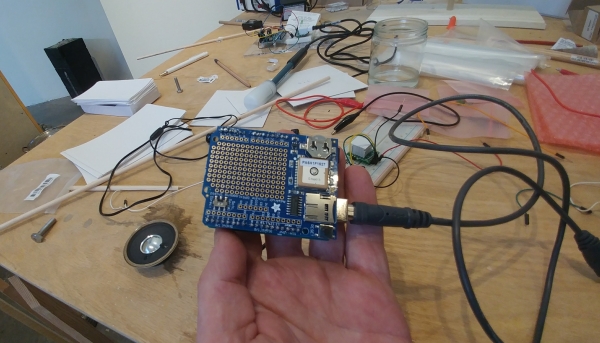
The is me walking from my studio at SFAI to the bedroom. The GPS signal at this range (100m) fluctuates greatly, but I like the odd compositional results. I did the plotting in OpenFrameworks, my tool-of-choice for displaying data that will be later transformed into sculptural results.
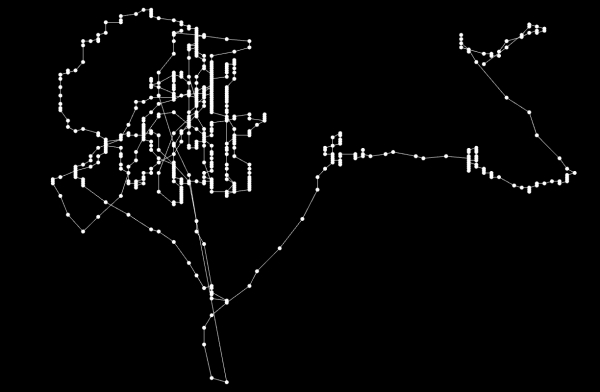
The second one is me driving in the car for a distance of about 2km. The tracks are much smoother. If you look closely, you can see where I stopped at the various traffic lights.
Now, GPS tracking alone isn’t super-compelling, and there are many mapping apps that will do this for you. But as soon as I can attach water sensor data to latitude/longitude, then it can transform into something much more interesting as the data will become multi-dimensional.
And the cover image? That would be me, shopping at Whole Foods.
For more information and updates, please join the American Arts Incubator Facebook page.
The first week of 2017 was orientation week for the American Arts Incubator program. I met the four other artists and soon associated their names with their respective exchange countries: Elaine Cheung (Russia), Michael Kuetemeyer (Cambodia), Nathan Ober (Colombia), and Balam Soto (Guatemala)
My exchange country will be Thailand, where I’ll be staying in the multilayered metropolis of Bangkok for 28 days in May/June.
Thailand sounds like an exciting place to visit, and of course it is. However, I’m approaching this not as a tourist, but rather as an arts ambassador. The issue that I’ll be addressing in my exchange is environmental health and specifically water pollution in the Chao Phraya River. This is especially relevant to Thailand, which has undergone rapid industrialization in the last couple decades with environmental regulations lagging behind.
In Bangkok, I will engage in a dialogue around community data-collection and mapping though DIY science with a focus on water pollution, resulting in data-visualization installations and sculptures.
My time will be split about 80/20 leading public workshops and creating my own artwork.
This ties into my current area of focus: creating physical data-visualizations, such as the sculptures of the water infrastructure of San Francisco. It also ties back to my longstanding history of working in art and education at institutions such as the Exploratorium.
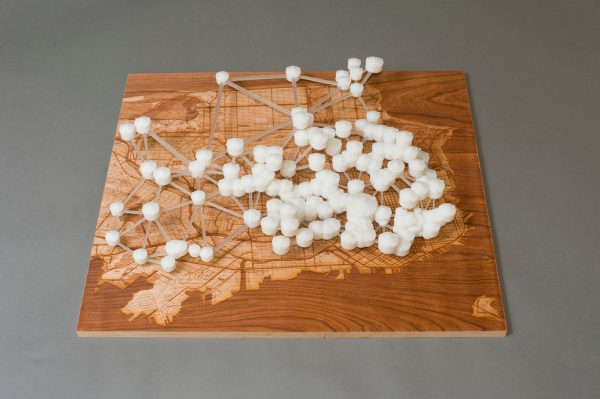
I learned many things this week, including, but not limited to: better patience for long meetings, organizational models for workshop engagement, the Drupal blogging platform, art-budgeting in a foreign country, and organizational techniques.
But most of all, I learned that I have an amazing organization, ZERO1, that will be supporting my work there as well as a cohort of four other artists I can learn from. Trust.